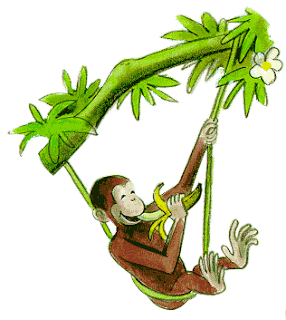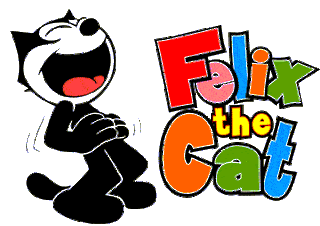Shopping for books for young readers.
This is a genre of literature that is, generally speaking, not that familiar to me. There is the Harry Potter series by J.K. Rowling, Island of the Blue Dolphins by Scott O'Dell, Stone Fox by John Reynolds Gardiner and Holes by Louis Sachar, but since I teach first grade these titles represent the extent of my expertise in books for 'tweens'.
But today I was educated in some recent New York Times #1 Bestsellers.
It all began when one of my favorite former students celebrated his 11th birthday. I have known Michael since he was an adorable 3-year-old boy being ushered unwillingly into my preschool classroom. He entered school with a knowledge of American Sign Language (ASL) because he is a Child of Deaf Adults (CODA) but his verbal English development was seriously delayed. I immediately fell in love with his pout, his little frustrations that caused him to act out and the fact the he really needed a teacher who could give him lots of extra care and attention. For his 4th birthday he refused to have anyone say "Happy Birthday" and cried angrily when we attempted to sing the "Happy Birthday" song to him. I thought "Boy, if he is this upset at 4 I can't imagine how he will react when he hits 30".
Michael stayed in my preschool class for two years. When he was ready for Kindergarten I moved up with him so I could remain his teacher. I did the same thing when he was ready for first grade. I told his mom, with whom I enjoy a fantastic relationship, that I simply adored him and her smiling response was "get your own". I finally had to cut the cord and trust that someone else could educate him when he entered second grade.
 Our school has all kinds of celebrations to honor student learning and to acknowledge their achievements and through the years Michael has always invited me to his. It was during a writing celebration the first week of April that he reminded me of his upcoming birthday. I smiled and asked him if he would like anything special. His response was "Can you get me the book Diary of a Wimpy Kid?"
Our school has all kinds of celebrations to honor student learning and to acknowledge their achievements and through the years Michael has always invited me to his. It was during a writing celebration the first week of April that he reminded me of his upcoming birthday. I smiled and asked him if he would like anything special. His response was "Can you get me the book Diary of a Wimpy Kid?" "Sure" says I "but I have to check it out first. What kind of book is it?"
It turns out that it is a very popular 'novel in cartoons' by Jeff Kinney that Junk Thief wrote about in this recent post. So I went this weekend and bought it for Michael. I wrote a little note on the inside and wrapped it.
 When he opened it today he said "Oh, I read this one. I wanted the blue one" (The sequel Diary of a Wimpy Kid: Roderick Rules) He was very grateful but disappointed.
When he opened it today he said "Oh, I read this one. I wanted the blue one" (The sequel Diary of a Wimpy Kid: Roderick Rules) He was very grateful but disappointed.So, I went back to Barnes and Noble after work and bought him the sequel. I also bought both books for myself. As this is Educator Appreciation Week with a 25% discount on all books, I thought I would take advantage of it.
While I was there I also checked out another book called The Titan's Curse by Rick Riordan. This is Book Three in a series about Percy Jackson & The Olympians. I was instructed to check it out by another student who informed me that his birthday was on April 24th and "could I get him a book too?"
 Imagine my thrill when I found his request on the Greek Mythology display case! Check out the artwork on the cover! Gargoyles! Pegasus! What?
Imagine my thrill when I found his request on the Greek Mythology display case! Check out the artwork on the cover! Gargoyles! Pegasus! What? A quick gander at the first two books in the series sent me over the edge. Book One is entitled The Lightning Thief and Book Two is The Sea of Monsters.
Below is a description of the first book and if you know me at all it is easy to see why I was drawn in with gusto.
From School Library Journal
Grade 5-9 – An adventure-quest with a hip edge. At first glance, Perseus Jackson seems like a loser (readers meet him at a boarding school for troubled youth), but he's really the son of Poseidon and a mortal woman. As he discovers his heritage, he also loses that mother and falls into mortal danger. The gods (still very active in the 21st-century world) are about to go to war over a lost thunderbolt, so Percy and sidekicks Grover (a young satyr) and Annabeth (daughter of Athena) set out to retrieve it.
Many close calls and monster-attacks later, they enter Hades's realm (via L.A.). A virtuoso description of the Underworld is matched by a later account of Olympus (hovering 600 floors above Manhattan). There's lots of zippy review of Greek myth and legend, and characters like Medusa, Procrustes, Charon, and the Eumenides get updates. Some of the Labors of Heracles or Odysseus's adventures are recycled, but nothing seems stale, and the breakneck pace keeps the action from being too predictable. Percy is an ADHD, wise-cracking, first-person narrator. Naturally, his real quest is for his own identity. Along the way, such topics as family, trust, war, the environment, dreams, and perceptions are raised. There is subtle social critique for sophisticated readers who can see it. Although the novel ends with a satisfying conclusion (and at least one surprise), it is clear that the story isn't over. The 12-year-old has matured and is ready for another quest, and the villain is at large. Readers will be eager to follow the young protagonist's next move.
– Patricia D. Lothrop, St. George's School, Newport, RI Copyright © Reed Business Information, a division of Reed Elsevier Inc. All rights reserved.
 I bought Book Three for the second birthday boy and then proceeded to buy all three books in the series for myself while once again taking full advantage of that 25% discount. Dropping a couple hundred for children's books that will bring a smile to several faces seems well worth the price. In my excitement I actually bought two copies of The Sea of Monsters and didn't realize it until I got back home. Perhaps I will hold onto it just in case someone else hits me up tomorrow.
I bought Book Three for the second birthday boy and then proceeded to buy all three books in the series for myself while once again taking full advantage of that 25% discount. Dropping a couple hundred for children's books that will bring a smile to several faces seems well worth the price. In my excitement I actually bought two copies of The Sea of Monsters and didn't realize it until I got back home. Perhaps I will hold onto it just in case someone else hits me up tomorrow.I am really looking forward to diving into these books and perhaps sharing them with my first grade class. It makes me very happy to be introduced to new literature by my students. They always choose the best stuff, like Kapow! by George O'Connor. Their input also makes me feel like I am in the loop.
Happy Birthday boys!






 The three-and-four-year-old children in my charge were eager to know the name of this cutie and I honestly admitted that I had no idea what it was called. So, I dutifully gathered the children around me and directed their attention to the well placed sign which would unlock the mystery. Gazing up at the words I suddenly became stumped. What was this creature? I stared blankly at the sign trying to decipher the strange combination of letters. And with sweat beginning to form on my brow I proceeded to sound out the name on the sign and inform those attentive little ones that the fuzzy little guy before them was called an 'OZ-EE-UH'. Yeah, that's right I assured myself 'an oz-ee-uh'. Whew!
The three-and-four-year-old children in my charge were eager to know the name of this cutie and I honestly admitted that I had no idea what it was called. So, I dutifully gathered the children around me and directed their attention to the well placed sign which would unlock the mystery. Gazing up at the words I suddenly became stumped. What was this creature? I stared blankly at the sign trying to decipher the strange combination of letters. And with sweat beginning to form on my brow I proceeded to sound out the name on the sign and inform those attentive little ones that the fuzzy little guy before them was called an 'OZ-EE-UH'. Yeah, that's right I assured myself 'an oz-ee-uh'. Whew!

